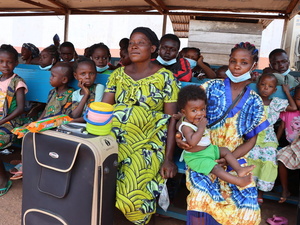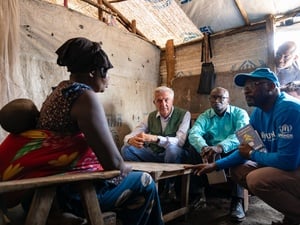Innovation: New Rwanda site a pilot for refugee camp planning and design
Innovation: New Rwanda site a pilot for refugee camp planning and design

Completed infrastructures (shelters, hangars, latrines) for the first few convoys of refugees
MUGOMBWA, Rwanda, March 7 (UNHCR) - The UN refugee agency has opened a new camp in southern Rwanda that will house thousands of Congolese refugees and act as a test bed for camp planning and design.
UNHCR began moving refugees in mid-February from the crowded Nkamira transit centre in western Rwanda to Mugombwa camp. The refugee camp, Rwanda's fifth, has been built on government-allocated land in Southern province, where the Kigeme camp opened two years ago is also located.
The move of some 9,000 mainly Congolese refugees to Mugombwa over the next three months will decongest Nkamira and provide capacity to accommodate any new influx of refugees from across the border. The new camp will be able to shelter some 20,000 people.
But UNHCR will also use Mugombwa camp as a pilot project in its development of a masterplan for the planning, design and construction of more efficient refugee camps that will provide improved protection and closer ties with the local community as well as better meet the needs of refugees. The refugee agency is working on this project with Stanford University in the United States and Ennead Architects of New York.
The innovative layout at Mugombwa facilitates integration and harmonious relations between refugees with local host communities by allowing the sharing of common space, facilities and essential services such as water, health, education and sanitation.
As part of the project, a socio-economic assessment will be conducted to evaluate the camp's impact on the neighbouring community. By using advanced software for more accurate topographical surveys, the design process will be faster and more effectively integrate the refugee population with the host community.
Meanwhile, refugees at Nkamira say they are not ready to return to North Kivu, despite the demise of the rebel M23 movement, which was defeated late last year by DRC government troops. They cite continuing concerns about insecurity and general lawlessness as well as a fear of persecution based on their ethnicity.
Rwanda provides shelter to more than 74,000 refugees, mostly Congolese.
By Erika Fitzpatrick in Mugombwa, Rwanda








